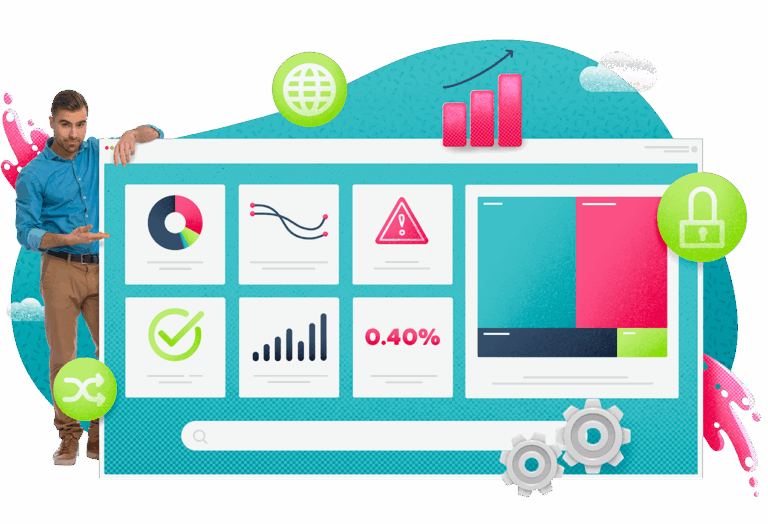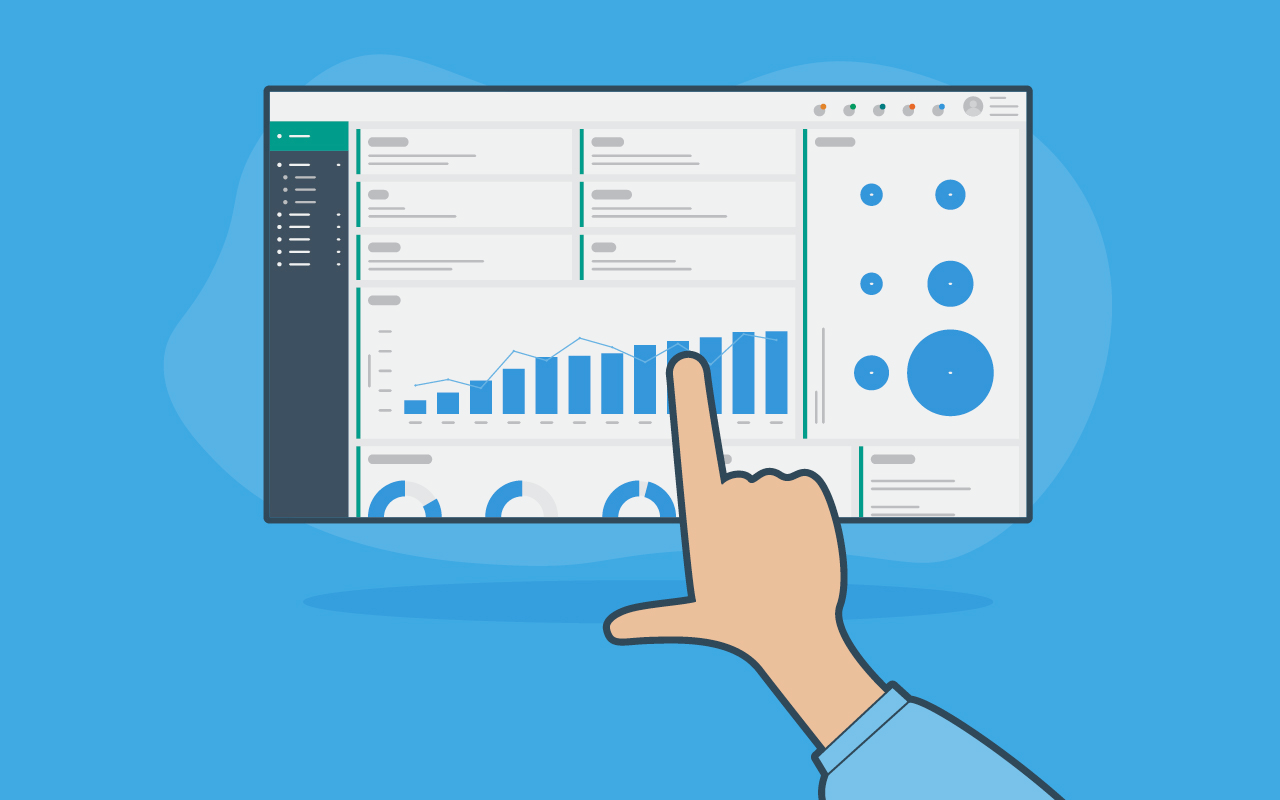The future of the workforce expects the same level of self-service in the workplace as they get in the real world. In fact, 81% of people attempt to help themselves before reaching out to support according to Harvard Business Review, and 72% of customers prefer self-service to resolve their support issues over picking up the phone or sending an email, according to Forrester research. This number is only expected to grow as millennials and Gen Z continue to dominate the workforce. Despite this high number of people trying to help themselves, only 12% of self-service initiatives have delivered the anticipated ROI due to a lack of user adoption. So where is the disconnect?
It all starts with focusing on tactics to increase self-service adoption.
Why is a Self-Service Portal Important?
If you have an ITSM portal that your business relies on, you might be wondering why bother implementing a self-service portal at all. Nearly all of the benefits can be summarized with two words: ticket deflection.
If you want to increase productivity at the service desk, you need to deflect tickets. Obviously, you can’t deflect tickets for serious incidents and problems, so you need to find ways to mitigate Level-0 and Level-1 tickets, in other words, you need to shift-left. But you can’t shift-left without a self-service portal.
You can effectively create a more efficient workforce and shift-left with self-service. With self-service, you can guide employees to knowledge they need, be it information for onboarding or articles for seasoned employees to handle their own needs and in-turn service their own (external) customers.
Going beyond the shift-left benefits, self-service increases ITSM usage as a whole. This helps not only avoid shadow IT practices, but allows for better monitoring of related incidents and problems, thereby creating the ability to look forward to monitor and prevent future issues.
Implementing employee self-service software is a strategic initiative that, when used properly, can lower tier-1 calls by 30%, improve time-to-resolution by 20%, reduce time to onboard by 70%, and reduce knowledge creation time by 90%. Sign me up! Am I right?
These benefits are great, but without employee adoption you won’t see the ROI you might be hoping for on your self-service portal. With any new (or even existing self-service portal) you need tactics to increase IT self-service adoption.
5 Tactics and Tips to Increase Self-Service Adoption
To realize the benefits of your self-service portal, your employees need to actually use it. The following five tactics and tips can help you get the most out of your employee self-software and boost self-service adoption.
1. Market the Self-Service Portal Effectively
The first and most important tactic to increase self-service adoption is to make sure that employees actually know about it. Often, businesses have an “if you build it, they will come” mentality, but that isn’t always the case with self-service. It takes a fair amount of marketing and communication to help employees understand where to go to find answers.
The best way to start marketing your self-service initiative is to create marketing materials – be they emails, posters, or even simple memos. Meet them where they already get their communication and get employees excited by sharing the new features of the portal. Beyond that, make sure they understand the benefit for them. If you tell everyone this is something to make the IT service desk agent’s lives easier, they might not pay as close attention. But if you let me know the benefits they will experience, you’ll see it adopted more quickly as part of the company culture.
Further, use self-service during onboarding and you will ensure that employees know this as their go-to resource for IT help from day one. This may be easier in many ways than convincing current employees to use a portal and may help encourage seasoned employees to utilize the new resources as well.
2. Provide Guided Contextualized Answers with Enhanced Intelligent Knowledge Management
One of the problems with traditional self-service portals is that they may be pulling information from an outdated knowledge base. Sure, your employees can find information in a Wiki, but will they actually use it, and is the information always kept up-to-date?
Recent information shows that with intelligent knowledge management provided by a self-service portal, you can see a rate of 70% first contact resolution for the service desk. That’s because when employees are given the right knowledge at the right time, they feel empowered to solve their own issues. The key here is that knowledge management must be intelligent and enhanced with the right contextual knowledge articles, videos, and guides. For instance, if a user is located in a company’s North America office, contextual knowledge management will display specific knowledge relevant to them, or if the system is aware they use a Mac vs a PC (because the asset is assigned to their profile in CMDB) it would show them Mac specific content.
To learn more about how to enhance your knowledge base with contextualized answers, check out our infographic here.
3. Give Users Access from Anywhere with Multiexperience Platforms
Disjointed interfaces and clashing tools create frustration for the support desk and their customers, leading to lower levels of adoption. You want to be able to meet your customers wherever they are – whether it’s a laptop, desktop, tablet, phone, watch, applications (like MS Teams), or any webpage using a Virtual Agent.
A mutliexperience approach to self-service and ITSM apps can achieve this.
Defined by Gartner, multiexperience: “refers to the various permutations of modalities (e.g., touch, voice and gesture), devices and apps that users interact with on their digital journey across the various touchpoints.”
For an example of multiexperience, think of an ITSM self-service portal that can be accessed on a laptop. That portal will need to be tailored and changed for someone accessing from a tablet or cellphone – and tailored even further still for someone trying to access from a wearable tech like a smart watch. No matter what device they are accessing the portal through, the experience should be seamless. When combined with automation tools like Microsoft Power Automate, your ITSM tool can create automated workflows between your favorite apps and services to synchronize files, get notifications, collect data, create and update tickets, and more.
This access creates a no-brainer for employees to know where to go for self-service support because they are already there.
4. Ask for Feedback
For employees to adopt something, they have to recognize that they are not just users of it, but contributors as well. To address this and to help refine knowledge articles and provide an enhanced experience, work to create natural feedback loops and cycles within the platform.
For example, after they access a knowledge article, prompt a questionnaire about their experience. Or, you may consider programming a chatbot or AI interface to interact and ask about their experience using the self-service portal, and enable them to provide feedback directly within a knowledge article. Then, take that feedback and apply it – especially when many customers are reporting the same thing. Customers will know their feedback is important and they will look forward to using a platform that is continually refining and updating.
5. Make AI More Human with Accurate Data and a Human Touch
As innovative and incredible as AI can be, people will give up on using it if they either run into communication issues or feel misunderstood by it. Let me give an example: Have you ever called a business and spoken to a bot who refuses to hear your “yes” or “no”, instead routing you to the wrong place? It’s almost become a running joke of yelling “HUMAN AGENT!” and getting routed everywhere but the place you need to be. That is frustrating and deters people from fully utilizing AI to its full potential.
In short, humans are sick of chatbots and AI that don’t understand what they mean.
To combat that, as a best practice AI needs to become more human. (No, I am not proposing AI that will create a hostile takeover of the world).
What I mean is that AI needs to utilize things like Natural Language Processing (NLP) and machine learning to provide users with contextualized answers. A recent survey found that only 20% of business are currently implementing these augmentations of AI software, but those who are, can see major benefits.
You can read more about how to integrate AI in service management here. You can also check out our infographic all about AI and self-service here.
It Starts and Ends with People
At the core, self-service is a people initiative and should always remain focused on the customer experience. If people are not adopting your self-service portal because they find it daunting, frustrating, or confusing, take their feedback and go back to the drawing board.
Remember, self-service is part of creating a modern service desk to meet the needs of the digital business of the future. To learn more about how to drive business success with next-gen service management, download the new HDI trend report here.


